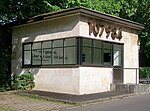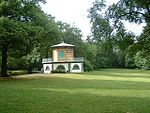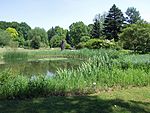Graduate School of Economics, Finance, and Management
2008 establishments in GermanyEducational institutions established in 2008Goethe University FrankfurtJohannes Gutenberg University MainzPostgraduate schools in Germany ... and 2 more
Technische Universität DarmstadtUniversities and colleges in Frankfurt

The Graduate School of Economics, Finance, and Management (GSEFM), based in Frankfurt am Main, Germany, is a graduate school offering quantitative and research-oriented graduate-level education programs. It was attended by 250 selected students in 2013.
Excerpt from the Wikipedia article Graduate School of Economics, Finance, and Management (License: CC BY-SA 3.0, Authors, Images).Graduate School of Economics, Finance, and Management
Norbert-Wollheim-Platz, Frankfurt Westend Nord (Innenstadt 2)
Geographical coordinates (GPS) Address Nearby Places Show on map
Geographical coordinates (GPS)
| Latitude | Longitude |
|---|---|
| N 50.126944444444 ° | E 8.665 ° |
Address
Johann-Wolfgang-Goethe-Universität Campus Westend (Johann-Wolfgang-Goethe-Universität Campus Westend; Johann-Wolfgang-Goethe-Universität Campus I.G.-Farben; Johann-Wolfgang-Goethe-Universität Campus IG-Farben;Johann-Wolfgang-Goethe-Universität Campus IG Farben)
Norbert-Wollheim-Platz
60323 Frankfurt, Westend Nord (Innenstadt 2)
Hesse, Germany
Open on Google Maps










